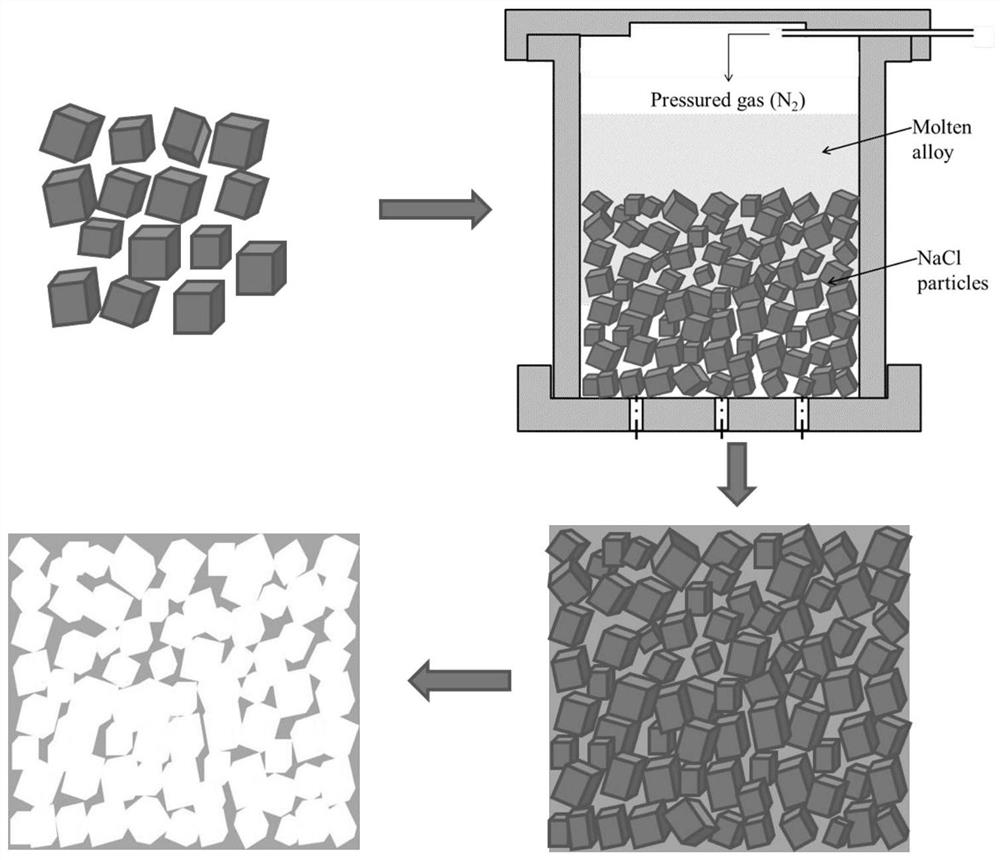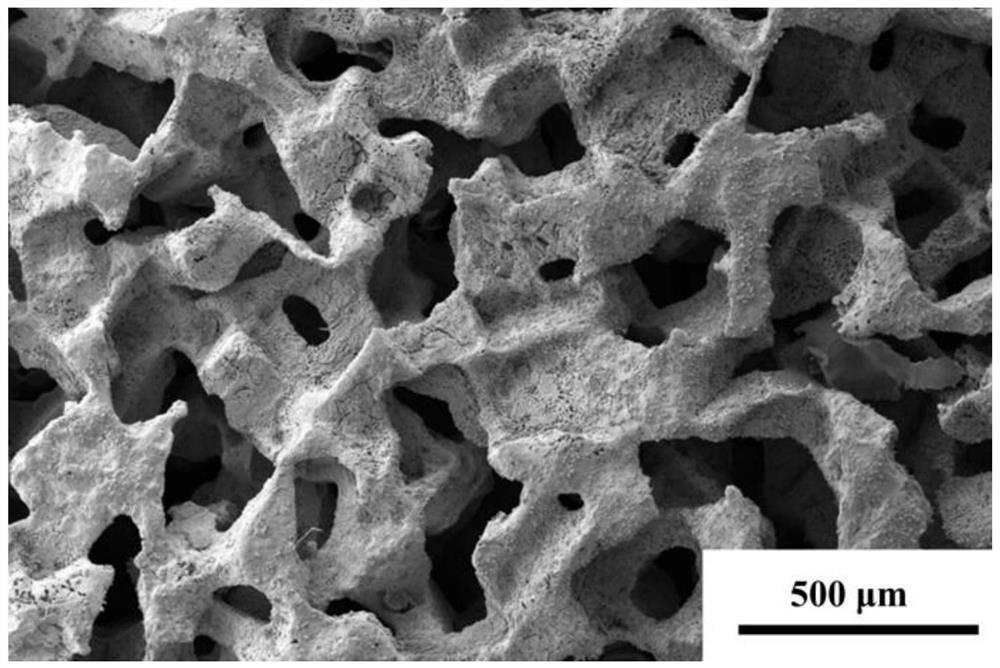Porous zinc alloy bone tissue engineering scaffold coated with bioactive coating and preparation method thereof
A technology of bone tissue engineering and bioactivity, applied in coatings, tissue regeneration, prostheses, etc., can solve the problems of poor bioactivity, insufficient mechanical properties of high-porosity porous zinc alloy scaffolds, etc., and achieve excellent biocompatibility , Accelerate healing, good pore connectivity
- Summary
- Abstract
- Description
- Claims
- Application Information
AI Technical Summary
Problems solved by technology
Method used
Image
Examples
Embodiment 1
[0030] This embodiment relates to a preparation method of a porous zinc alloy bone tissue engineering scaffold coated with a bioactive coating (pectin coating), the pore size is 100 μm-300 μm, the porosity is 50%-70%, and a zinc-lithium alloy is used (Zn-0.8wt.% Li) as the matrix. image 3 The pore distribution and pore size of the porous zinc alloy are shown, and the porosity of the porous zinc alloy is measured by the drainage method. Specific method: put the cut porous sample (φ6×20mm) into a 25ml measuring cylinder filled with 10ml of water, connect the measuring cylinder to a vacuum machine, and vacuumize for about 5 minutes until all the gas in the porous metal is discharged. At this point, record the volume of water displaced by the porous scaffold (V 2 ). The volume of the porous sample is the volume (V 1 =565.2mm 3 ).
[0031] From this formula the porosity of porous samples can be obtained.
[0032] Specific implementation steps:
[0033] Screening of the pa...
Embodiment 2
[0044] This embodiment relates to a preparation method of a porous zinc alloy bone tissue engineering scaffold coated with a bioactive coating (chitosan coating), the pore size is 500 μm-800 μm, the porosity is 70%-90%, and zinc lithium is used Silver alloy (Zn-0.8wt.%Li-0.5wt.%Ag) was used as the matrix. The porosity of the porous zinc alloy was measured by the drainage method, and the steps were the same as in Example 1.
[0045] Specific implementation steps:
[0046] Screening of the particle size of sodium chloride particles: Pass the sodium chloride particles through 20-mesh and 32-mesh sieves respectively to obtain sodium chloride particles with a particle size ranging from 500 μm to 800 μm. After the screening is completed, dry at 500°C for 2 hours.
[0047] Put 300g of sodium chloride pellets into a mold whose size is Carry out preheating, preheat to 400 ℃ and keep warm. And during this process, the sodium chloride particles are continuously compacted to make the...
Embodiment 3
[0057] This example relates to a preparation method of a porous zinc alloy bone tissue engineering scaffold coated with a bioactive coating (sodium alginate coating), the pore size is 500 μm-800 μm, the porosity is 70%-90%, and zinc lithium is used Manganese alloy (Zn-0.8wt.%Li-0.5wt.%Mn) as the matrix. The porosity of the porous zinc alloy was measured by the drainage method, and the steps were the same as in Example 1.
[0058] Specific implementation steps:
[0059] Screening of the particle size of sodium chloride particles: Pass the sodium chloride particles through 20-mesh and 32-mesh sieves respectively to obtain sodium chloride particles with a particle size ranging from 500 μm to 800 μm. After the screening is completed, dry at 400°C for 6 hours.
[0060] Put 300g of sodium chloride pellets into a mold whose size is Carry out preheating, preheat to 400 ℃ and keep warm. And during this process, the sodium chloride particles are continuously compacted to make the s...
PUM
| Property | Measurement | Unit |
|---|---|---|
| particle diameter | aaaaa | aaaaa |
| pore size | aaaaa | aaaaa |
| pore size | aaaaa | aaaaa |
Abstract
Description
Claims
Application Information
 Login to View More
Login to View More - R&D
- Intellectual Property
- Life Sciences
- Materials
- Tech Scout
- Unparalleled Data Quality
- Higher Quality Content
- 60% Fewer Hallucinations
Browse by: Latest US Patents, China's latest patents, Technical Efficacy Thesaurus, Application Domain, Technology Topic, Popular Technical Reports.
© 2025 PatSnap. All rights reserved.Legal|Privacy policy|Modern Slavery Act Transparency Statement|Sitemap|About US| Contact US: help@patsnap.com



